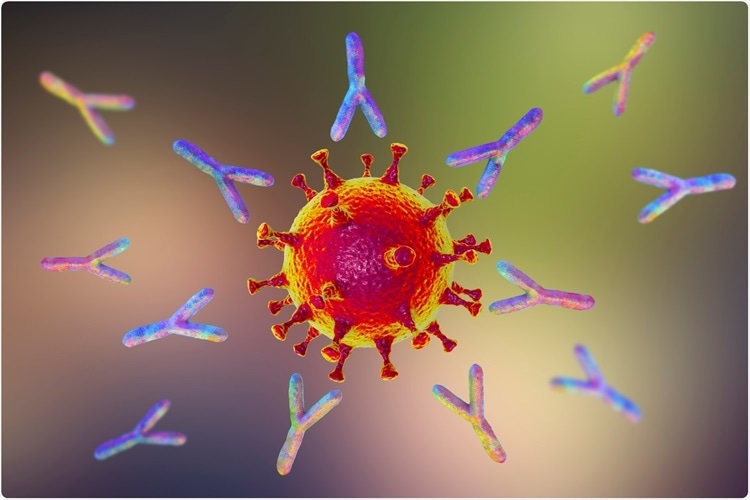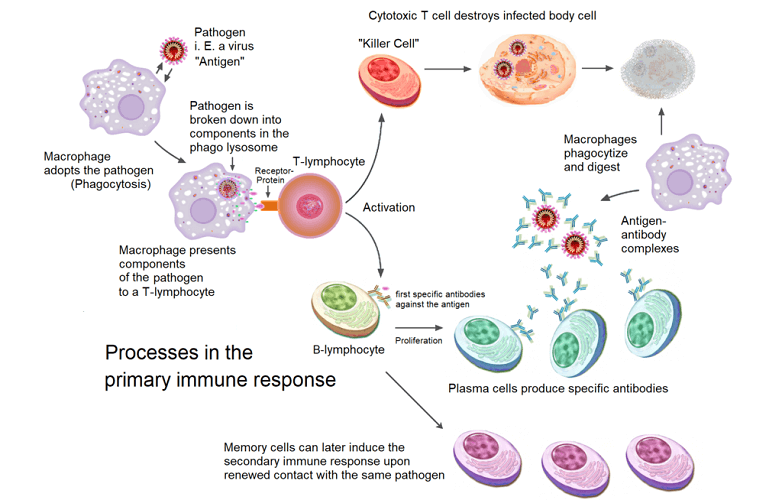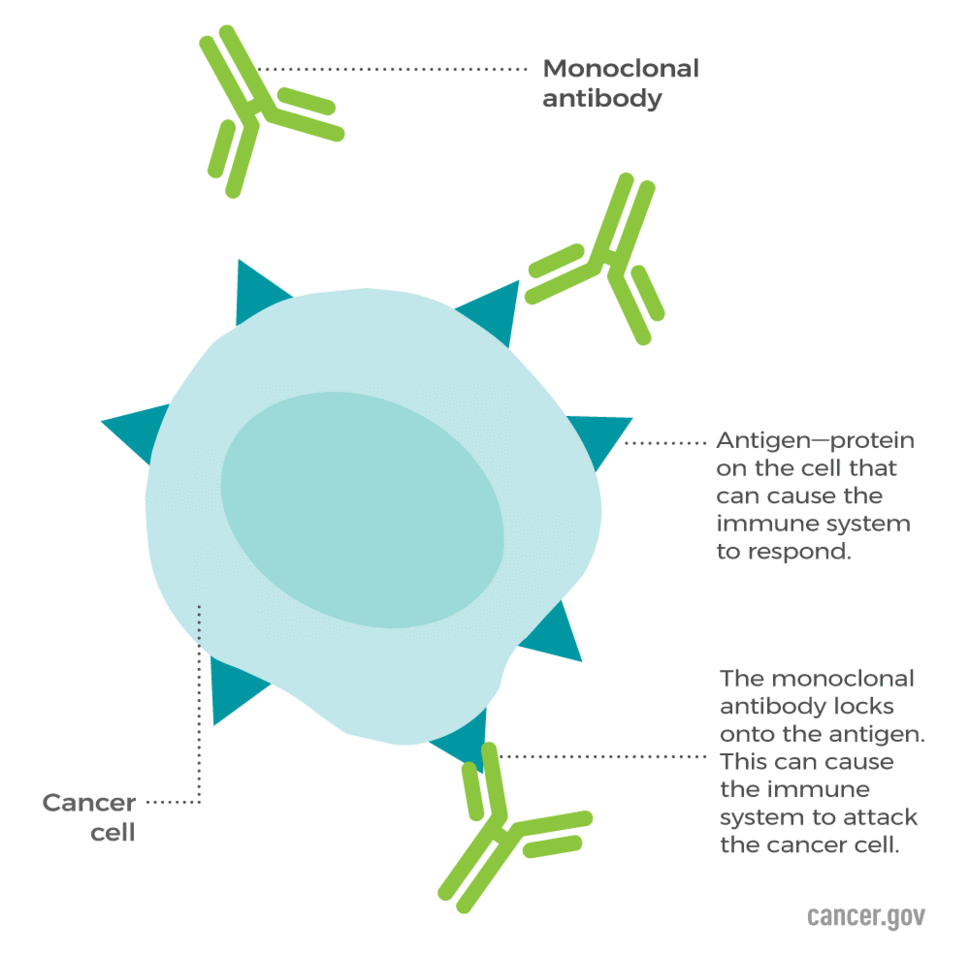Humoral Immune Response Study Guide
What is Humoral Immunity?
The word “Humors” means body fluids, and humoral immunity is derived from immunity mediated by extracellular fluids which contain macromolecules such as antimicrobial peptides, antibodies, etc. It is also known as antibody mediated immune response or humoral immune response.

- It targets and kills foreign bodies or pathogens present in the lymphatic system and blood.
- Various defence mechanisms such as opsonization, neutralization, and complement system activation are utilized by antibodies to attack and destroy any invading pathogens such as bacteria, viruses, fungi, and toxins.
###What is cell-mediated immunity?
Immunity is the body’s capacity to fend off infections and protect itself against the development of foreign bodies inside of us. Our bodies created the immune system as a defensive mechanism against outside invasion by dangerous germs or other illnesses. The immune response that doesn’t require antibodies is called cell-mediated immunity.
T-cell lymphocytes and antigen-presenting cells are used in its operation. Body cells that have been infected by bacteria, viruses, or fungus often trigger the cell-mediated immune response. Additionally, the body’s existence of cancer cells causes it to become active. In subsequent parts of this session, we’ll go into greater depth about cell-mediated immune responses.
Humoral Immune System Functions
- B cell lymphocytes which are a type of immune cells, produce antibodies and help in detection of specific antigens.
- Antibodies are highly specific. Specific antibodies are produced for their respective antigens.
- Antibodies are proteins that identify and neutralize antigens as they contain specific antigen-binding sites which attach to the particular target antigens.
- Upon effective attachment to the desired antigen, they either stop the normal antigen binding process or initiate the production of autoimmune cells, directly destroying or removing the target antigen.

What lymphocytes are involved in cell-mediated immunity?
In cell-mediated immunity, naive T cells, helper T cells, killer T cells, and macrophages are the primary lymphocyte subtypes. In the circulation and lymphatic system, naive T lymphocytes circulate that have not yet undergone activation.
These immature cells become activated in response to an antigen-presenting cell and quickly divide into several T-cell subsets. These subsets carry out various tasks, for instance, secrete a group of signalling proteins known as cytokines. These cytokines have the potential to directly harm the target cell or to enable “killer” T lymphocytes and macrophages to become active.
How are Antibodies Produced?
-
The bone marrow is a soft sponge-like organ that is present inside the bones of the body.
-
Stem cells within the bone marrow produce red blood cells, white blood cells, and platelets that are actively involved in the body’s immune system.
-
B lymphocytes or B cells, produced by the bone marrow, are the major constituents in the humoral mediated immunity and circulate in the body through the lymph or blood.
-
They mature in the secondary lymphoid tissues after they are produced (the tonsils, lymph nodes, spleen, and mucosa-associated lymphoid tissue).
-
Initially, general B cells produce antibodies that bind to the surface and remain there, allowing their exposed antigen-binding site to pick up any potential petitions or foreign body signals. This attached form of an antibody is called immunoglobulin.

- When the antigen-specific to antigen-binding site of the immunoglobulin binds to the naive or memory B cells, it stimulates the brain cell to produce and release more antigen-specific antibodies.
- This B cell then matures and releases antigen-specific antibodies for the rest of its life cycle. It is now known as a plasma or a memory B cell for that specific antigen.
- The antibodies from this plasma cell are called monoclonal antibodies, and they are produced only on exposure to that antigen.
- Thus upon any secondary exposure to that particular antigen, the memory B cell enables the body to respond quicker and stronger to that antigen.

What do Antibodies do to fight Pathogens?
Three major defense mechanisms are adopted by antibodies and involved in the humoral mediated immunity to destroy antigens that they detect in the body’s circulatory system: neutralization, opsonization, and the complement system.
1. Neutralization
This mechanism involves neutralizing the pathogen by getting involved in its infecting ability. Consider the example of a virus. The antibody prevents the entry or ability of the virus to attach to the target cells. This stops the virus infection in the body.
2. Opsonization
In this mechanism, the antibodies coat the antigen to make it recognizable for elimination by phagocytes. The antigen-binding complex attracts and causes phagocytic cells to engulf and eliminate the circulating pathogen through phagocytosis.
3. The Complement System
- The complement system is actually a part of the innate immune system.
- It essentially acts as a support system for antibodies and phagocytic cells to remove pathogens from the system.
- It consists of a number of small proteins that circulate in the blood.
- When triggered, they release active cytokines. These cytokines, in turn, amplify the overall immune response.
Humoral vs cell-mediated immunity
Against intracellular infections, cell-mediated immunity is effective, but antibody-mediated immunity is effective against extracellular pathogens. Additionally, antibody-mediated immunity produces a quick reaction, but cell-mediated immunity produces a delayed response
Conclusion
- Humoral mediated response fights against pathogens that freely move within our body fluids such as the blood or lymph.
- It detects the foreign antigens on the pathogens and destroys them through the production of antibodies. It neutralizes them, causing cell lysis or phagocytosis.
- Production of cytokines, formation of germinal centres, generation of memory cells, switching of isotopes, and activation of immune cells are some other processes accompanying humoral immunity.
FAQs
1. What is a humoral immune response?
It is a branch of immunity that involves substances found in the body fluids of humans and is predominantly mediated by antibodies.
2. What is an example of the humoral immune response?
Innate immunity is an example that includes the body’s complement system and other substances such as interferons And interleukin-1.
3. What are the four steps of the humoral immune response?
- B cells make specific antibodies to invading antigens
- B cell activation upon binding to the antigen
- Division of B cells with the help of Helper T cells
- Destruction of the antigen by neutralization or opsonization
4. What is humoral immune response?
It is a quick response to foreign invaders such as pathogens that infect healthy human cells. Antibodies are produced by B cells which bind the antigens and neutralize them.
5. What causes humoral immunity?
Exposure to foreign pathogens or toxins initiates humoral immunity.
6. What is the meaning of humoral?
Humoral relates to or anything from a fluid of the body and Humoral immune response involves antibodies reacting to and destroying pathogens that try to invade human cells.
7. Where does humoral immunity occur?
It is initiated in the bone marrow, where B cells are produced, then released into the circulatory system, which is the blood or lymph.
8. What is a humoral immune response in biology?
The immune response involves transforming B cells into plasma cells, which then produce specific antibodies to certain antigens.
9. Why is humoral immunity important?
It is important in host defense to secondary infection by the same pathogen as memory B cells produce specific antibodies to target antigens. This is important in the concept of vaccination as primary exposure to parts of antigens causes the production of memory B cells which release antibodies to the vaccine antigen. On secondary exposure to the same pathogen, the memory B cells will produce antibodies to that pathogen and destroy it.
We hope you enjoyed studying this lesson and learned something cool about the Humoral Immune Response! Join our Discord community to get any questions you may have answered and to engage with other students just like you! Don’t forget to download our App to experience our fun, VR classrooms – we promise, it makes studying much more fun! 😎
]]>